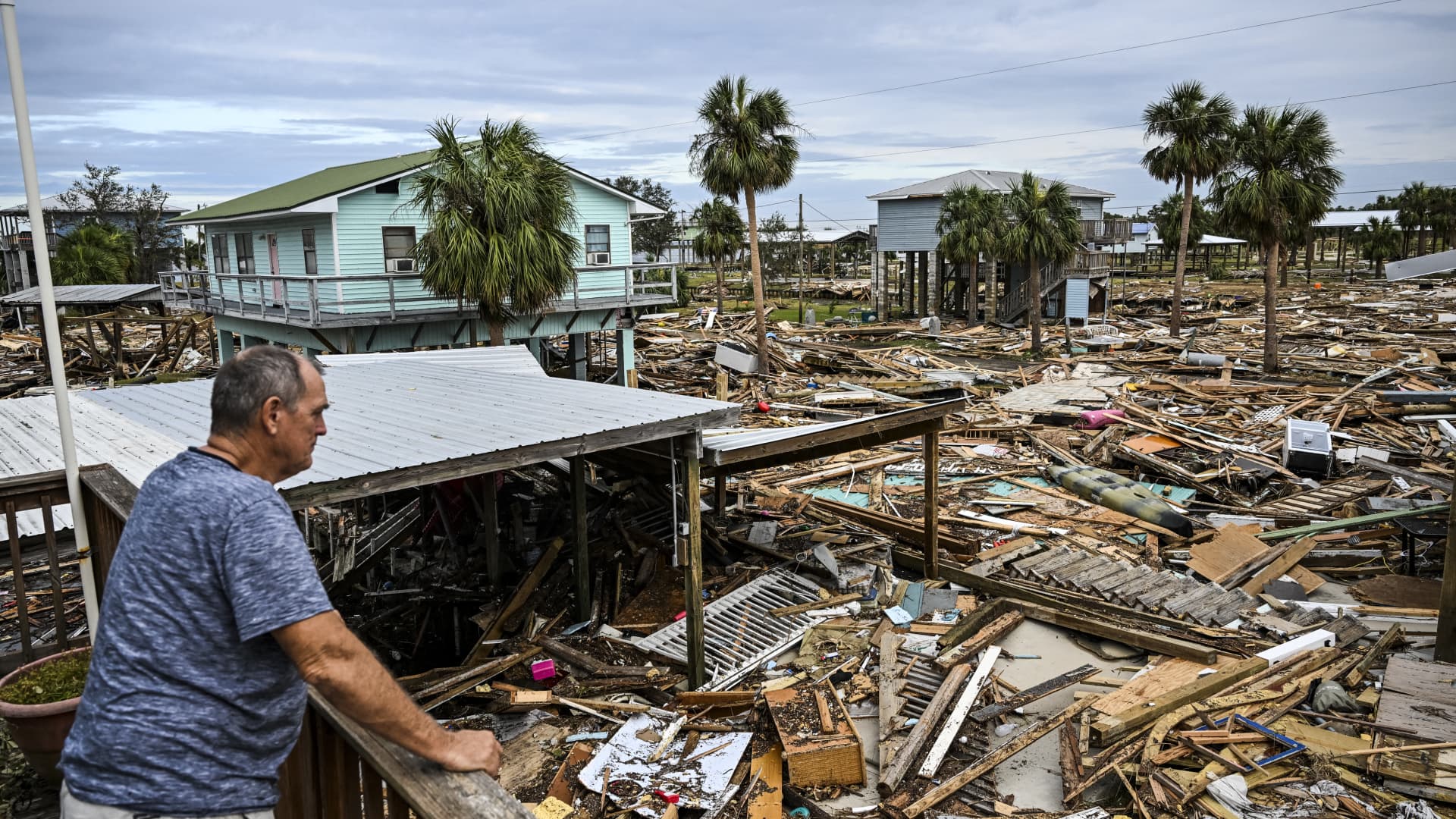David Hester inspects damages of his house after Hurricane Helene made landfall in Horseshoe Beach, Florida, on September 28, 2024.
Chandan Khanna | Afp | Getty Images
After a natural disaster, some victims may be eligible for tax relief — but qualifying can be tricky, tax experts say.
In late September, Hurricane Helene ravaged parts of Florida, Georgia, North Carolina, South Carolina, Virginia and Tennessee. Two weeks later, Hurricane Milton brought high winds, tornados and flooding through the middle of Florida.
Impacting both insured and uninsured homes, the losses from both storms could amount to tens of billions of dollars.
Certain victims can amend 2023 returns to claim a tax break for recent losses, known as the “casualty loss tax deduction,” according to the IRS. But the calculation is complicated, experts say.
More from Personal Finance:
This insurance provision can help with living costs after a natural disaster
Taxpayers in 25 states get extra time to file, but not to pay, 2023 federal taxes
How to file a homeowners insurance claim after a natural disaster
Here’s a breakdown of who qualifies for the casualty loss deduction and how the tax break works.
How to calculate the casualty loss deduction
Before 2018, taxpayers who itemize tax breaks could claim the casualty loss deduction for more types of personal losses, such as home damage from a fire or storm, explained certified public accountant and attorney Mark Luscombe, principal federal tax analyst for Wolters Kluwer Tax & Accounting.
But the Tax Cuts and Jobs Act of 2017 temporarily restricted eligibility. Only losses in federally declared disaster areas will qualify through 2025, he explained.
The casualty loss deduction calculation starts with your home’s “adjusted basis,” or original purchase price plus the cost of certain improvements, explained Beth Brennan, vice chair for the disaster relief tax task force at the American Institute of Certified Public Accountants.
You also need to know how much the fair market value declined due to the disaster, she said.
How to calculate the casualty loss deduction
1. Use the smaller of your adjusted basis or pre-disaster fair market value
2. Subtract insurance proceeds and other relief payments
3. Subtract $100 and 10% of adjusted gross income
“In practice, you don’t always have an appraisal of your property right before a disaster hits,” so taxpayers can use “safe harbor methods” outlined by the IRS, Brennan said. The IRS safe harbors generally don’t rely on appraisals.
Once you have your home’s pre-disaster fair market value, you compare it to your adjusted basis. You’ll choose the smaller of those two numbers before subtracting insurance proceeds and other relief payments.
The final step of the calculation is subtracting a $100 and 10% of your adjusted gross income, or AGI, which is all earnings minus certain tax breaks.
“The higher your AGI, the greater the reduction of your loss,” said Luscombe.
Congress approves ‘qualified disaster losses’
In certain cases, “qualified disaster losses” are eligible for special rules, but “that’s driven by Congressional action,” according to Brennan.
When there’s a qualified disaster loss, the $100 rises to $500, there is no 10% AGI limit and victims can add their loss on top of the standard deduction.
That means they can claim the deduction even if they don’t itemize tax breaks, Brennan said.
However, “we haven’t had any qualified disasters, as designated as such by Congress since late 2020,” Brennan said.
“AICPA has been actively advocating for permanent uniform tax relief for all victims of disasters since 2021 — for almost four years now — because we have this inconsistent treatment,” she said.

















